

Hey what's up.
So I have to be honest, nowadays my main focus is on my lead generation business, which for me is still the #1 online business model and the easiest way to make money online.
But before I got into lead gen, I started an Amazon FBA business, and I thought it would be cool to put a case study together showing you how my business partner and I managed to create a product that did over $25K a month on Amazon, after being in business for less than 18 months.
Back when we started with Amazon FBA, we knew we wanted to get involved with some kind of online business, we just weren’t sure which one.
With all the buzz around Amazon FBA at the time, we decided to see what it was all about.
To be honest, what really piqued our interest was the fact that Amazon would not only send you their customers, but that they would also handle all the logistics of the sale for you, from collecting payment, to fulfilling the order right to the customers door.


This case study will take you through our journey of becoming Amazon sellers, and give you a sneak peak behind the curtain of our business
We’ll cover the good, the bad and the ugly:


1. MINDSET: Before Diving into Amazon FBA You Need to Get Your Head Right
I wanna be totally upfront and honest with you.
Selling on Amazon is damn hard!
Don’t let anyone tell you differently.


You are building a real business, that requires inventory, cash flow and an insane amount of grit and persistence.
My business partner and I knew this going in though, and we had made a clear decision that we were going to commit to this business model for at least 18 months.
We were determined to make sure we didn’t lose heart and quit when things got tough.
Luckily for us, we’d been listening to some high quality podcasts about selling on Amazon, and the hosts of these shows were very clear about what it took to actually sell on the biggest online shopping platform in the world.


We also decided we were going to offer the best customer service in the world!
A bold claim I know, but after reading the Zappos book “Delivering Happiness”, we’d been fascinated by how their CEO Tony Hsieh had built a Billion dollar company based on providing world class customer service.
We loved this idea, and we decided we were going to make it the foundation of our business model.


Lastly, we made the decision that we were going to launch on the UK platform, rather than the US.
The reason for this was that we believed that the UK was a lot less competitive, and would be a good place to cut our teeth.


If things went well, we could always expand to the US afterwards.
So armed with the right mental attitude, and a burning desire to serve our customers, we rolled up our sleeves, and started diving into the world of Amazon FBA.
2. THE PROCESS: How Does Amazon FBA Work?
Amazon FBA can be broken down into a few key steps:
Amazon FBA can be broken down into a few key steps:


Well that's the theory anyway.
The reality is a little more complicated, as we soon started finding out...
3. PRODUCT SELECTION: What Product Should I Sell on Amazon?
The first step any new Amazon seller will face is deciding what product they want to sell.
For me, product selection is one of the hardest and scariest parts of getting started with Amazon, because the wrong decision can cost you a fortune!


The good news is that there are a number of cool tools which will help you analyze what’s already selling on Amazon, and more importantly, how well it is selling.
The tool we used when launching our first Amazon product was the ever popular Jungle Scout, created by 7 figure Amazon seller Greg Mercer.
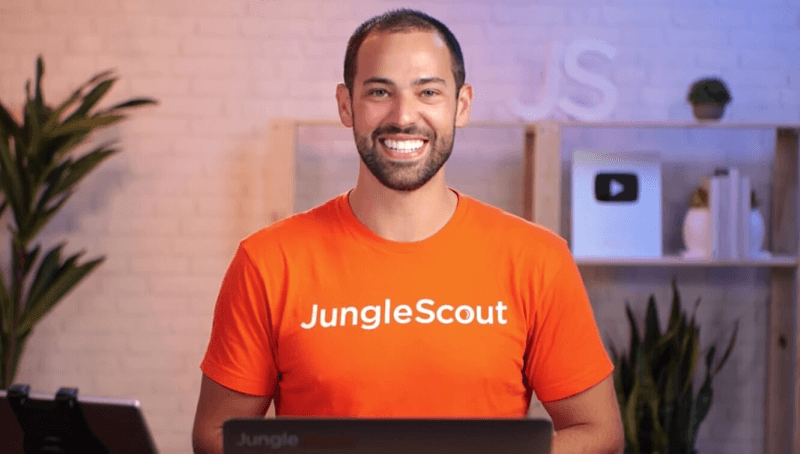

We went for the plugin version, and simply dived into a number of different Amazon categories, and then let the tool start doing its analysis.
The cool thing is that Jungle Scout works perfectly in almost all of Amazon’s marketplaces, so it wasn’t an issue that we were launching in the UK.
Scraping the data allowed us to dig into some valuable information about the products that were already selling well.
These included:
- How many units a month each product was selling
- The revenue being generated each month by these sales
- The number of reviews each listing had
- The average price of all products in that category.
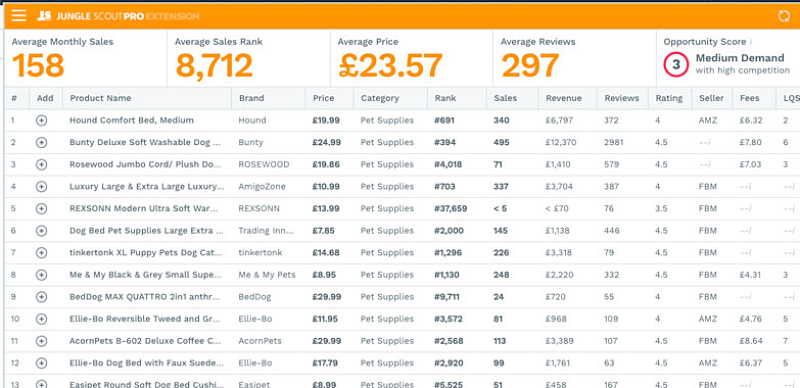

We knew that one of the big secrets to selling on Amazon when you’re first starting out is to make sure you’re not trying to reinvent the wheel.
Instead, a better strategy for newbies is to find a product that is already selling well, and then trying to improve it by trawling through the customer reviews and feedback.


You want to try and find out what buyers liked and didn’t like about the product, and then find a way that you can use this to make your product better.
One of the biggest mistakes I see with people just starting out on Amazon, is that they think with a PRODUCT mindset, when they should really be thinking with a BRAND mindset.
In other words, they find a random product that they think is selling well, when they should really be looking for a product that they can build a brand around later on.


The key is to focus on serving an audience, by launching complimentary products that match your product line.
Find an audience, and then solve their problems.
This will allow you to build a brand that your customer base will be loyal too for years to come.
A good example of this would be selling a yoga mat as your first product, and then yoga blocks as your 2nd product, and maybe even a yoga bag to carry all these items in as your 3rd product.
In doing this you’re building a brand with products that you can cross market to your customer base, and you’re serving an audience of Yoga lovers that will be more likely to buy your other products if they like the first one they buy.


4. LAUNCH TIPS: How to Launch a New Product on Amazon
Pro tip #1
Consider launching on Amazon UK’s platform. It’s way less competitive and a great place to cut your teeth.
Pro tip #2
Pick a product that is already selling well on Amazon and improve it.
Pro tip #3
Serve an audience. Pick a product that you can bundle into a brand later down the line.
Pro tip #4
Pick a product that doesn’t have different sizes and colors (this will make stock management a nightmare if you’re a newbie).
Pro tip #5
Pick a product where multiple top sellers don’t have thousands of reviews.
Pro tip #6
Pick a product that sells for at least $20+. Anything less will make it tough to make a profit.
Pro tip #7
Crunch the numbers before committing - You may be surprised how low your profit margins are.


Sure, this wasn’t as sexy as selling fitness equipment, but it allowed us to serve a hungry market of people that needed a home storage solution, and most importantly it checked all of the 7 boxes above for us.


And with that our brand, ROKEY Vacuum Storage Bags was born!
Our next step was to wade into the murky world of finding a reliable supplier that we trusted enough to pay a few thousand dollars to upfront.
5. CAPITAL: Money Talks
Ok let's be very clear. It costs a lot of money to start an Amazon business.
Not only do you need to order and pay for physical inventory, but you also need to pay to get it shipped into Amazon’s warehouses (often from halfway across the world).


Then once you’ve done that, you’ll need an advertising budget so that you can start driving highly targeted buyers to your product, in the hope that they might actually like what you’re offering enough to pay you for it.
As newbies to the Amazon world, we figured $3K would get us going, but we were totally wrong!
The reality was that we actually needed more like $10K, and even that was cutting it fine.
The gamble was that if Amazon buyers didn’t like what we were offering, we’d be kissing $10K goodbye, which would suck big time.
But hey, we knew the risks, and we were prepared to make the gamble, as the thought of launching our very own retail brand filled us with excitement.
6. DUE DILIGENCE: Crunching the Numbers
I hate number crunching, but if you’re serious about launching your Amazon FBA business the right way, you need to know your numbers.
If you don’t, you might find yourself burning money, without even knowing you’re doing so.


Luckily, Amazon offers a free fee calculator tool for each market that they sell in, which will give you a pretty good idea about what your general expenses will be per unit.
Launching in the UK meant that we were paying our suppliers in US dollars, but selling in British Pounds.
This meant we often needed to perform some interesting currency conversion math on the fly, but here’s an example we used when looking for suppliers for our vacuum storage bags.
Of course the conversion rates would depend on the strength of each currency at the time, but you get the idea.
- Estimated selling price per unit - £16.99 ($22.35)
- Unit cost of manufacturing - $5.89
- Unit cost of shipping into Amazon’s warehouses - $1.91
- Amazon’s commission fee per unit: £2.60 ($3.42)
- Amazon’s fulfillment fee per unit: £2.65 ($3.49)
- Monthly storage fee per unit: £0.22 ($0.29)
Gross Profit Per Unit: $7.35
That will give you your gross profit per unit.
After that you’ll want to build in some advertising money, factor in returns, damaged stock and only then will you start getting a clear picture of what your actual net profit per unit will actually be.


7. SUPPLIERS: Getting Your Amazon Product Made
If you’ve done any research into how to find a supplier for your Amazon product, then there’s no doubt you’ve probably come across the site Alibaba.
Here you’ll find thousands of mostly Chinese manufacturers who are able to produce almost any product you can imagine.
Nowadays, there are other options for sourcing Amazon products which the more savvy Amazon sellers are taking advantage of, but for us Alibaba made sense.


After ordering 3-4 different samples from different suppliers, we picked the supplier that offered the best quality sample.
It may be tempting to get into price negotiations with your suppliers, or even go for the cheapest sample, but if you do this there is a good chance that they will cut corners on your order to make up the money elsewhere, and this will result in low quality down the line.
Low quality = death in the Amazon world.
It’s also important to find a supplier that you connect with. For most Chinese suppliers, English won’t be their first language.
That’s ok, provided you can still communicate with them and that they can understand your business needs.
So with that, we took the plunge of placing our first order, which amounted to a one-off order of 500 units.
Looking back, this seems like a pretty small order as we are now accustomed to placing 3,000 unit orders on a monthly basis.
But when you’re first starting out there is always doubt and cash flow to consider, so placing a smaller order is perfectly natural, and in most cases a really good idea.
8. PACKAGE DESIGN: Bringing Your Amazon Product to Life
We realised early that one of the best ways to differentiate yourself from other Amazon sellers is through high quality packaging and inserts.
Dollar Shave Club did this brilliantly with a generic product like shaving razors. They made shaving cool again, and ended up being sold to Unilever for $1Billion dollars back in 2016.




Dollar Shave Club used packaging to make a generic product like a shaving razor look sexy.
This inspired us massively and we were determined to build our own brand in this way.
While we knew that vacuum storage bags were a pretty generic and plain looking product, that didn’t mean the box that they arrived in had to be.
We knocked up a few different concepts for our packaging, and then found a designer on Fiverr to bring our vision to life.


Once again, we had a few false starts, and it took us 3 designers to get to a design that we were happy with, but a big key of selling on Amazon, and being a successful entrepreneur in general is resilience.
We stuck to our guns and pushed on until we had a package design that we loved and could actually see selling in retail stores around the world.


Top Tip: Take a walk around your local retail stores and take note of the color schemes being used by various brands.
In our case, we went with dark blue and green as our dominant colors, as this represents trust and stability.


You’ll often find these colors used in home retail brands, and we were really happy with the outcome of our package design, as we thought it looked professional enough to sell in any retail store.
We also noticed that most sellers were packaging their vacuum storage bags in a polyester bag. We decided to package ours in a box, which cost a little more, but offered a long-term storage solution for bags that weren’t being used by customers.
Packaging our storage bags in a box also made us look a little different to the other sellers which helped us stand out from the crowd.
I mentioned that one of the core goals for our business was to provide the best possible customer service.
Along with that, we were also committed to building a brand that people would love.
So to go with our high quality package design, we also created an insert card which we had dropped into every box of our vacuum bags.
This let our customer know that we were a small family business, and that we were here for them if they had any problems.
To this day we still get customers emailing us to tell us how much they appreciate our insert card.
9. GRAPHICS: Image Design for Your Amazon Product
Once again we used Fiverr to find a graphic designer that could give our images a professional look and feel. We wanted images that would draw our customers in like moths to a flame.
For our main image, we got the background removed and displayed our packaging in all its glory!


Full disclosure, we took our product photos ourselves with an SLR camera, but if photography is not your thing then I’d highly suggest investing in having your photos taken professionally.
Your images are the nuts and bolts of your Amazon listing, and in conjunction with reviews, they will make or break the success of your product.
As you can see below, we dropped our product into various lifestyle settings, which take the buyer on a journey and shows them the many different ways that they can use our product.








Most of all, our images looked professional, which is super important if you want to stand out as one of the top sellers.
10. AMAZON LISTING: Building and Optimizing a Listing that Ranks and Converts
Let’s do a quick recap.
At this stage, we had placed an order of 500 units (6 bags in each box or unit) with our supplier, which we were told would take about a month to produce.
We had also got the box design created and sent it to our supplier who had then shipped us back a sample of our completed product in its box.
This allowed us to take the photos we needed for our Amazon listing, and have the artwork done for them.


Once we had those, the next step was to build and optimize our Amazon listing, so that once our stock arrived in Amazon’s warehouses, we were ready to start selling it.
The first thing we did was upload our images to our new listing.
Amazon allows you to have one main image, and an additional 6 images with it.
We strongly recommend that you fill all of these image slots, as this is your chance to really stand out from your competitors.
Next we got to work creating an eye-catching title that had our keywords in it. This is an important factor in determining where you show up in the Amazon listings, and which buyers click on your listing.
From there we built out the content of our listing, by filling out the bullet point options Amazon allows you to use.


TOP TIP: When building our bullet points, we tried to illustrate the value of our product to the buyer, and not only listed its features.
We wanted to make sure that we highlighted and addressed the problems and pains our product solved (storage space around the home).
At the end of the day, humans are all about solving pain. Almost everything we do in our day-to-day lives, be it working, eating, sleeping, being in relationships, is focused around avoiding pain (hunger, shelter, loneliness etc.)
11. SHIPPING: Getting Your Product into Amazon's Warehouses
With our Amazon listing ready to go, and our suppliers completing our order, we then faced the challenge of getting our product all the way from China, into Amazon’s warehouses in the UK.
After crunching the numbers, we realised that it wasn’t going to be cost effective to transport our product via air freight.
Sure it would be much quicker, but the added cost (often 4x the cost of shipping) would eat heavily into our profit margin.
So after shopping around, we eventually settled on a great shipping company called Shippo. We were assigned an account manager, and 3 years later we are still working with the same company because they do such a great job of handling our logistics for us.
The downside to using shipping as a transport method is the really long lead time.
It can often take up to 60 days to get a shipment from China into Amazon’s warehouses, which meant we were looking at a 90 day lead time from placing an order with our supplier to actually being able to sell it.
This would lead to some challenging product supply chain issues in the months to come, but more on that later...


12. PRODUCT LAUNCH: Making Your First Sale on Amazon
When it came to launching our product on Amazon, we knew we needed a strategy.
90 days after placing our first order of vacuum storage bags with our supplier, our stock arrived in the UK, and made its way into Amazon’s warehouses.


We were officially in business.
We had our listing setup and optimized, and we had stock to sell.
Now we just needed to get our product in-front of buyers.
Driving Traffic to Your New Product Listing
Everyone knows that reviews are the heart and soul of any Amazon listing. Without them, it can be difficult to convince anyone to buy your product.
I mean, why should they, when there are other products that already have social proof right?
Our Chicken and Egg Scenario


Since our new product didn’t have any reviews, we needed a strategy to get some.
But how can you get reviews if no one will buy your product (because it doesn’t have reviews)?
This was our chicken and egg scenario.
To get the ball rolling, we set up a very simple Facebook ad, and targeted Mom’s in the UK who were interested in home organization and cleaning.


Our advert offered them a free box of our bags - all they had to do was tell us where to send it.
As you can imagine, we had a lot of interest. I mean who doesn’t like FREE right?
We ended up sending out about 50 free boxes to various people around the UK, which cost us about $500 in total.
This was money well spent though, because once they had received them, we then politely emailed them and asked them if they wouldn’t mind leaving us a review on our Amazon listing.


Now I want to be clear, Amazon has very strict rules about soliciting reviews in exchange for a free product. This is a big no no!
So we were not allowed to insist that they leave us a review, or even ask them to leave a 5 star review.
This is not permitted by Amazon, and violates their TOS.
Getting caught doing this will get you kicked off their platform pretty swiftly.
We could only ask if they would mind leaving us a neutral review.
Fortunately many of them were happy to do so, and within 2 weeks of launching, we had managed to get 15-20 reviews on our listing, which was just enough to start getting some interest from other Amazon shoppers.


Next we needed a way to get real eyeballs on our product.
Our listing was still nowhere to be seen on the first page of Amazon when we searched for “vacuum storage bags”.
This meant that no one was seeing it, which meant that no one was buying it.
Luckily, Amazon gives you a simple and extremely powerful way to give your new product the right exposure.
This is by taking advantage of their Pay Per Click (PPC) advertising platform.


By setting up an advertising campaign, and tweaking our PPC bid, we were able to immediately get our listing right to the top of Amazon for our main keyword “vacuum storage bags”.




Sure, it cost us money every time someone clicked on our sponsored ad (an eye watering £2.30 per click actually), and there was also no guarantee they would actually buy anything when they did click.
What it did do though, was allow us to start getting our product in-front of potential customers, which in turn led to a small trickle of sales.
NOTE: Due to the fact that we only had a few reviews, we decided to offer a discounted price that would attract buyers.
Instead of selling for £16.99 like we’d planned, we listed our storage bags for £14.99, making them more appealing to buyers looking for a bargain.
This is the entrepreneur mindset you need to have when starting out a new business venture.
We were spending more money on advertising then we were making back, so technically we were making a loss, even though we were actually making sales.


But we were ok with that, because we knew that Amazon’s algorithm would eventually rank us on the first page naturally as we made more and more sales.
This would mean we would eventually start getting “free sales” that weren’t costing us advertising clicks.
Once that happened, it would be game on!
We also knew that we would be able to raise our price (which we eventually did) once we had a few more reviews behind us.
Again, it’s all about the long game with Amazon.
As more and more sales started trickling in, we went from selling 2-3 units a day, to selling 10 units a day, and within a month we were steadily selling 20 units a day at £14.99.
We were still losing more than we were making though, which is why I mentioned that you need to factor in that extra advertising budget when you are first starting out with FBA.


13. AMAZON REVIEWS: Setting up a Review Funnel
A critical challenge that every new Amazon seller faces is getting consistent reviews on their new product.
We were no different.
Reviews are the fuel that powers any Amazon product listing.
Without them, you’ll struggle to compete against other sellers, and you’ll be forced to compete on price alone, which you never want to do.
Our next step was to set up a review funnel, in which our buyers would automatically be sent an email requesting a review after they had purchased our product.
Once again, Amazon has very strict rules about how you do this, so we were extremely careful to ensure that we played by them.
Within a day of evaluating various review tools, we’d signed up for a Feedback Five subscription, and set up our review funnel which automatically started collecting us reviews from buyers.


Every Amazon shopper that purchased our vacuum storage bags received a review request from our review funnel.
We still use this tool today, and even with only around 5% of buyers actually leaving a review, we have managed to collect thousands of reviews in the process.
This in turn has allowed us to increase our selling price, leading to a greater profit.


TOP TIP: We made sure we addressed any negative reviews headon by contacting the buyer wherever possible to rectify the problem.
As a brand, the last thing we ever want is an unhappy customer, and our stance is that we will either issue a refund or replacement without asking any questions.
I believe this sets us apart from the average seller, and this competitive edge has allowed us to get a number of negative reviews removed from our listing.
In many cases, customers have been so blown away by our customer service, that they have often gone on to change their review afterwards, without us asking them to do so.
14. STOCK AND CASH FLOW: Keeping Your Business Running
Being an entrepreneur is about dealing with new challenges, and one of the biggest challenges any new Amazon seller will face is stock and cash flow management.


With a 90 day lead time to get our product into Amazon’s warehouses, we quickly found out that 500 units was not going to be enough stock.
Unfortunately for us though, we hadn't placed another order, as we didn’t have the funds or the confidence that our untested product was going to sell anything at all.
So with that, we sold out our first order of stock in about 8 weeks (I guess a good problem to have), and just like that the sales dried up.


In the meantime, we’d scrambled together some additional funds, and placed a 2nd order of 1,000 units from our supplier in China, which was in production.
The bad news was that it would still be at least 65 days until this made its way on to Amazon’s selling platform.
Were we upset? Sure we were, but we could see the big picture. We knew this was a teething issue that all new sellers face.
Our biggest takeaway was that people were buying our product, and in theory the concept of selling on Amazon worked, even though we weren’t making much money yet.


After what seemed like months of waiting, our new order eventually landed in Amazon’s warehouses, and we started selling again.
In the meantime, we had put together further capital from the sales of our first order to place a 3rd order.
Over the next 12 months, we did this over and over again, occasionally running out of stock for 2 weeks at a time.
On one occasion, Amazon lost an entire order of ours, which meant we were immediately out of stock for 2 months.
It took us 3 months to get them to reimburse us for this, and at best we broke even on the amount they paid us.
We were quickly learning that the golden rule of selling on Amazon was simple.
Don’t run out of stock!
You can’t make money if you don’t have any stock to sell.
Eventually we were able to get a steady supply chain flow in place, and as our monthly sales increased, we placed bigger and more frequent orders, somehow just managing to remain in stock each time.
Just over 18 months from the day we launched, we had our first month of doing $25,000 in sales. This equated to selling roughly 1,200 units in a month, a record for our little business at the time.


Now of course, we didn’t make $25,000 ourselves. That was the revenue from our sales. After production costs, shipping costs, advertising costs, warehouse fees, Amazon’s FBA fees, we walked away with about $3,500 in profit for the month.
15. GROWTH: Driving New Traffic to Your Amazon Listing
BONUS: Driving Outside Traffic to Your Amazon Listing
18 months on from launching our product, we managed to keep selling at a steady pace, and as our reviews increased each month, so did our sales.
After around 2 years of being in business, we decided to start exploring options for driving additional traffic to our Amazon listing.
One cool thing about Amazon is that they provide sellers with all sorts of insight reports, to help them keep an eye on how their business is performing.
Below you can see that we were getting between 70 - 120 visitors a day to our Amazon listing, and converting at between 40% - 55% on good days.
This told us that we had a product that people liked. It was just a case of getting more people to see it.


We brainstormed various ways that we could start doing this, and came up with the idea of building a website for our ROKEY vacuum storage bags, which we could start driving traffic to.
This website would in turn drive traffic to our Amazon listing, where potential buyers would hopefully purchase our product.


Above is a screenshot of our website, which drives traffic to our Amazon listing, and allows us to build a mailing list.
We knew there were a ton of different ways to get traffic to our brand website:
- We could pay influencers to promote our product.
- We could run paid social media ads.
- We could run Google Adwords.
- We could rank our site in Google through Search Engine Optimization (SEO)
- We could create Youtube videos.
- We could build a mailing list to drive a steady stream of repeat visitors to our site.
On top of that, we also had the option of driving traffic directly to our Amazon listing, through Amazon’s Associate Program and other sources.
At this stage, our website is only around 9 months old and we have already seen an increase in traffic to our listing.
This is mainly due to the skills I’ve learnt in ranking websites in Google through my lead generation business (more on that below).


16. SCALING: Expanding Your Amazon Business
About 18 months into selling on Amazon, we also realized that once your product is making steady sales, it is then just a numbers game.


Like anything in life, the more shoes you have on the shelf, the better your odds are at success.
With that mantra, we then started looking at launching a 2nd product that would compliment our first product.
As our first product offered only Jumbo vacuum storage bags, it made sense to complement this with a Variety Pack, which included a mixture of Jumbo, Large and Medium bags for the shopper that is looking for more choice.
There was just one problem.
Cash flow, or lack of it.
On paper it might sound simple.
Reinvest the profits from Product 1 into Product 2 right?


This is what they teach you in Amazon FBA courses, but the reality though is that as Product 1 is growing, you find that you need to reinvest profits back into that instead of a new product.
If you don’t you may find that your first product will stall, or even worse, run out of stock.
This was our biggest problem (again a nice problem to have).
Of course you have the option of getting finance from Business loans to grow your product line, but this is always a personal decision and for us it made more sense to limit any additional borrowing and risk.
Eventually, 3 years after starting our business, we have now managed to launch our 2nd product, a Variety Pack of vacuum storage bags.


The downside?
Almost every penny we make from our first product is now going into funding our 2nd product, so we’re not pulling much out of the business for ourselves at this stage, even though our revenue numbers might be high.
Once again though, this is the kind of thing most Amazon courses don’t teach you. It’s really easy to see big revenue numbers and assume the sellers are making huge profits.


The reality is that their capital is probably tied up in inventory, and new product launches.
In my opinion, this makes the Amazon FBA model a tough business, and I much prefer the lead gen model I focus on these days.
TOP TIP: If you are launching a complimentary product that is a variety of your first product, consider grouping both products under one parent listing.
When you do this, your existing reviews from your first product will be applied to the parent listing, as all child product reviews are grouped under the parent listing.
This means that your new variety product will launch with what will seem to be reviews when buyers view the listing.


At the time of this screenshot clicking on any of these child listings, will display 2,946 customer reviews as all reviews are grouped under the parent listing.
17. THE NUMBERS: Some Cool Stats About our Amazon Business
157
Most units sold in a day
$4,142
Most revenue in a day
2,534
Most units sold in a month
$63,231
Most revenue in a month
2 Months
Longest period out of stock
£184.32
Most PPC spent in a day
At the start of this case study, I promised you I’d cover the good, the bad and the ugly, and I can assure you that while selling on Amazon we’ve had good days, bad days, and some down right ugly days!
18. FINAL FBA THOUGHTS: The Good, the Bad and the Ugly


Now that I’ve been an Amazon seller for over 3 years, I’ve developed a pretty good feel for the pros and cons of this business model.
Conclusion
So the big question I get asked all the time is:
"Hey, after 3 years of being an Amazon seller, would you still recommend that I start an Amazon FBA business now?"
Look, there’s no doubt this business model works.
Amazon FBA is alive and well, and you can totally build a viable online business with it if you are driven, focused and committed.
But would I do it again if I had to start all over?
Hell No!
This business is super hard and the cons definitely outweigh the pros in my opinion.
You need serious capital investment to get started, you have no idea if anyone is even going to buy your product, and just about all your money is tied up in inventory.
On top of that, it’s getting super competitive and saturated, and in most cases, the profit margins are at best 20% after all the hidden expenses the Amazon FBA courses don’t tell you about.
7 years ago, Amazon was like the Wild West, and it was easy to make a fortune, but the game has changed big time!
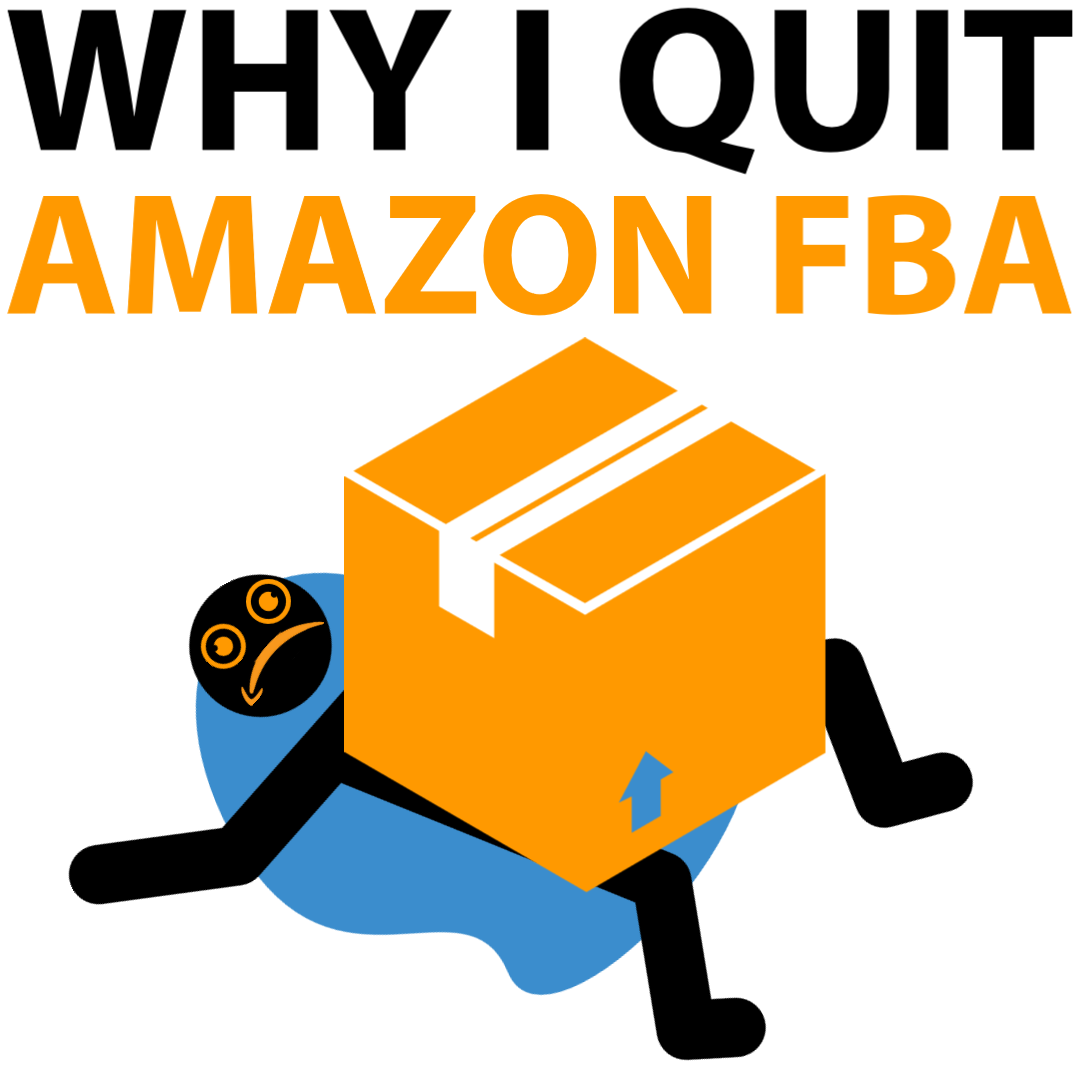

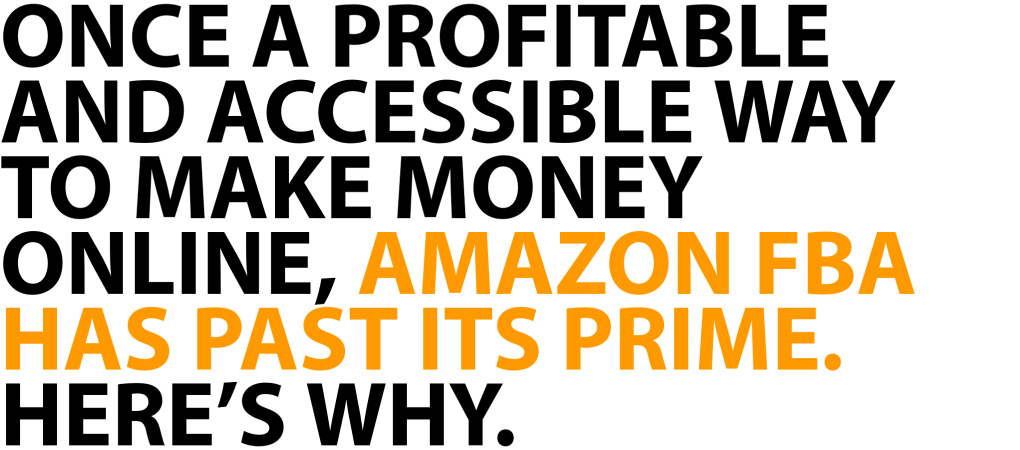

MARKET SATURATION & COMPETITION


You're going head to head with literally millions of sellers covering over 6000 different product niches. Breaking into an established niche is next to impossible - and finding untapped niches are becoming increasingly rare.
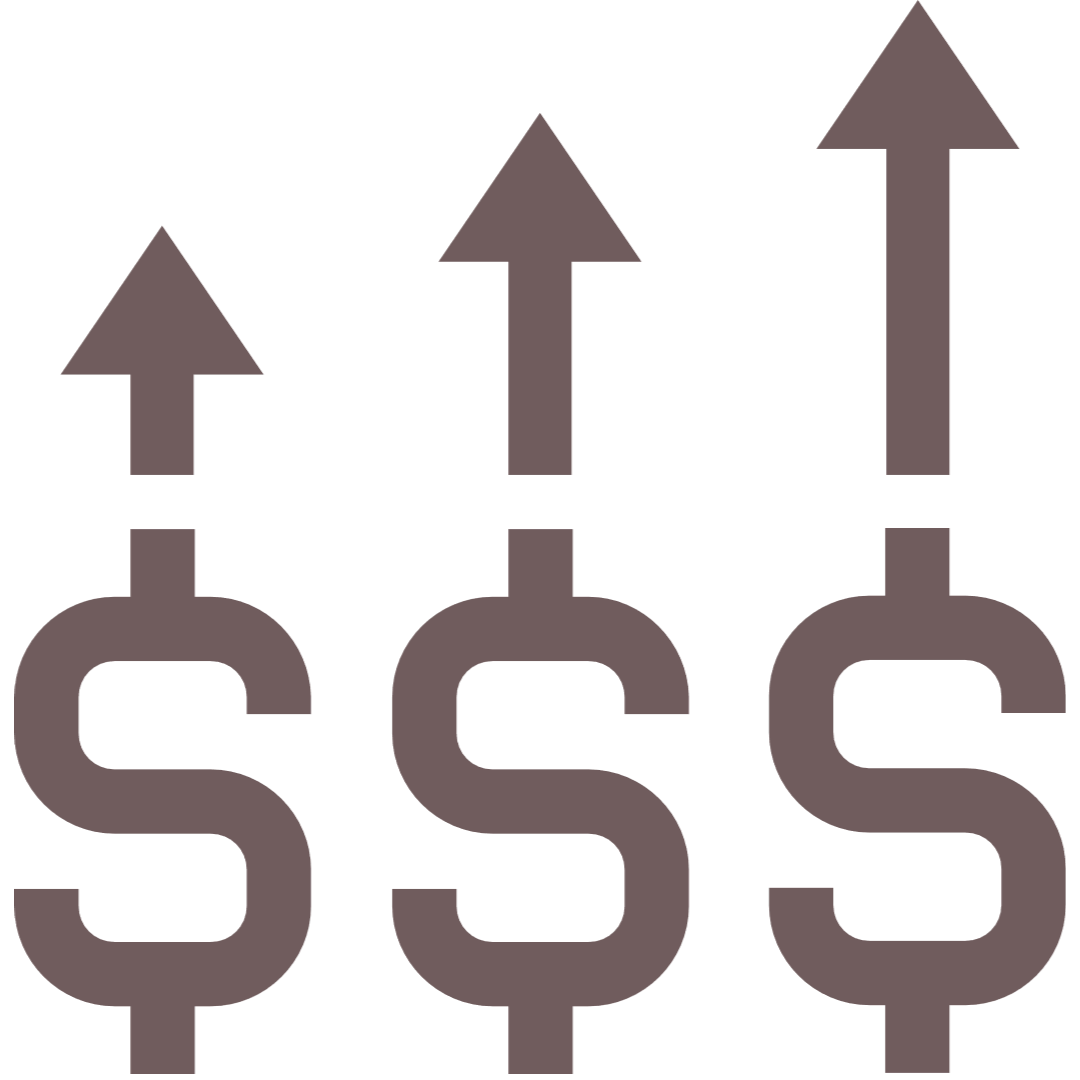

Start up costs require roughly $5000 in initial inventory, $10,000 in advertising, and $3000 in listing optimization, packaging, and branding. All in all, if you want to have a chance at success, you'll need to spend roughly $15,000 to $20,000 just as an initial investment.
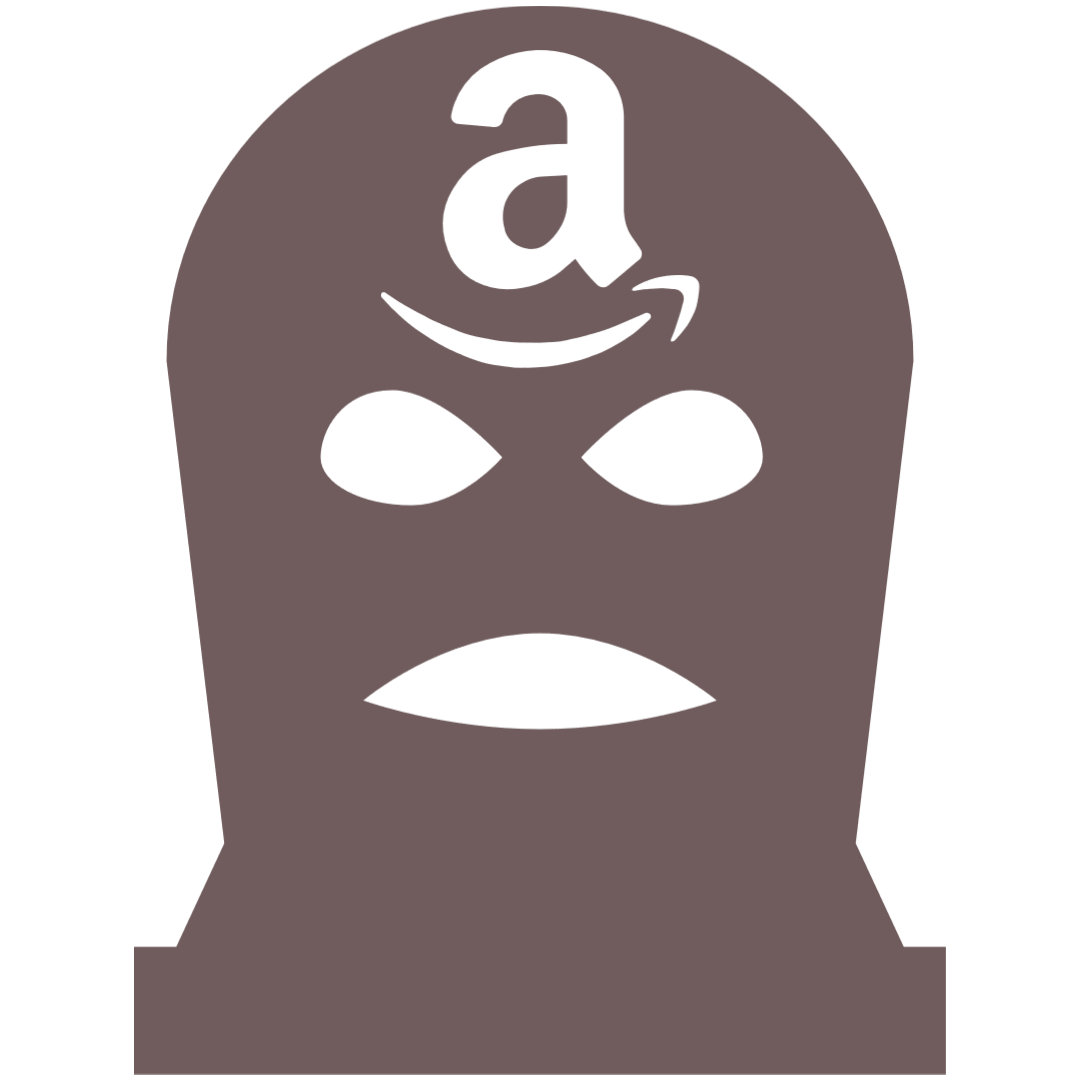

Nearly all successful products are copied and resold by either Amazon or Chinese manufacturers who then undercut their competition at margins that only billion dollar companies can afford. Every time you see an Amazon Basics or Essentials product at the top ranked listing, it's likely that dozens of independent sellers went out of business.
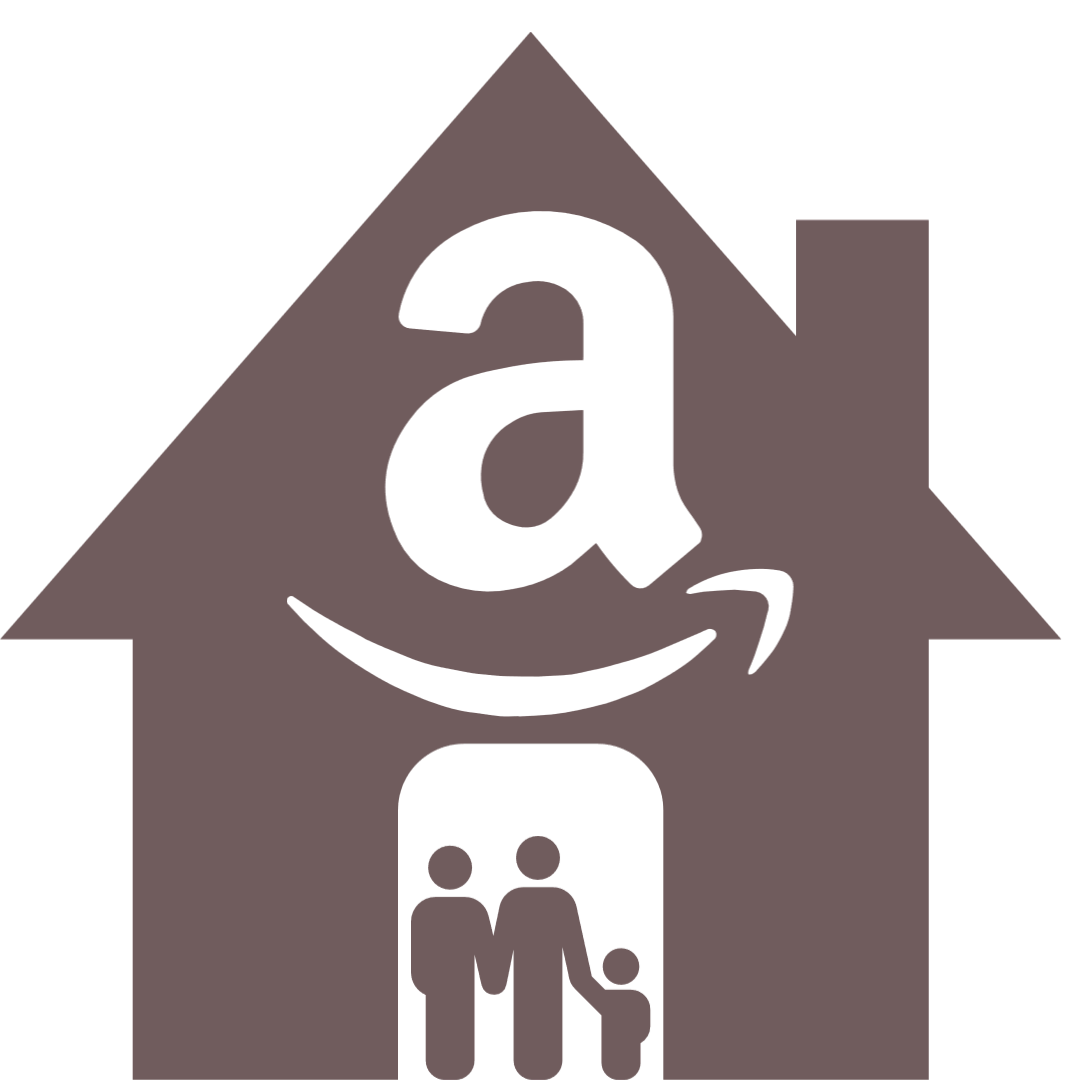

The key to long term wealth is in building and owning valuable assets, but with Amazon FBA, you own nothing. You're an enslaved middleman to Amazon, who care only about market domination and making a profit. Remember, you're there to make them money - and your use of Amazon is a privilege they grant you; a privilege they can revoke at any time.


Between identifying products and suppliers, passing quality assurance, securing inventory, and then product ranking, you're looking at over a year before you even have a chance at seeing a net positive income.


Profit margins are extremely low, meaning the only real way to make money is through mass ordering. Successful Amazon sellers often make less than 10% profit off of their sales.


Amazon's terms of service are fickle and ever changing. Bans are frequent and can spell disaster for FBA startups and established businesses alike.


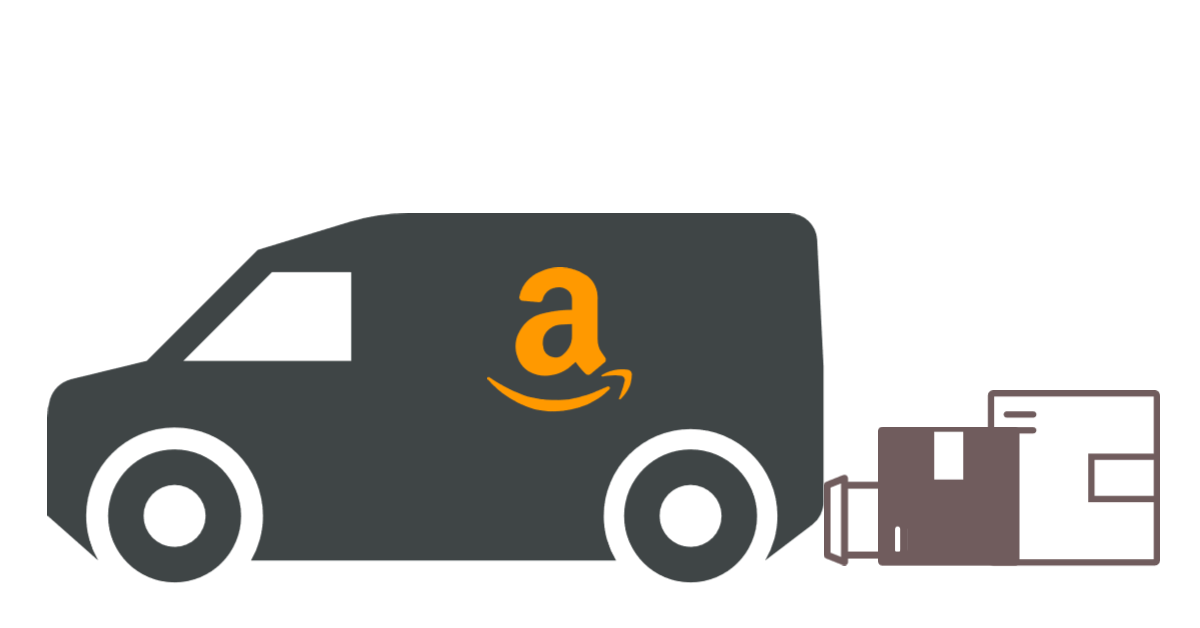

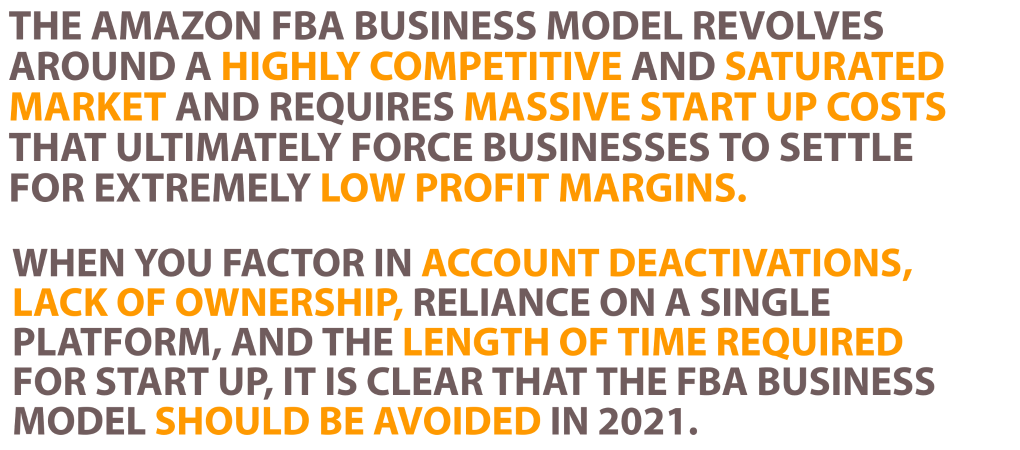





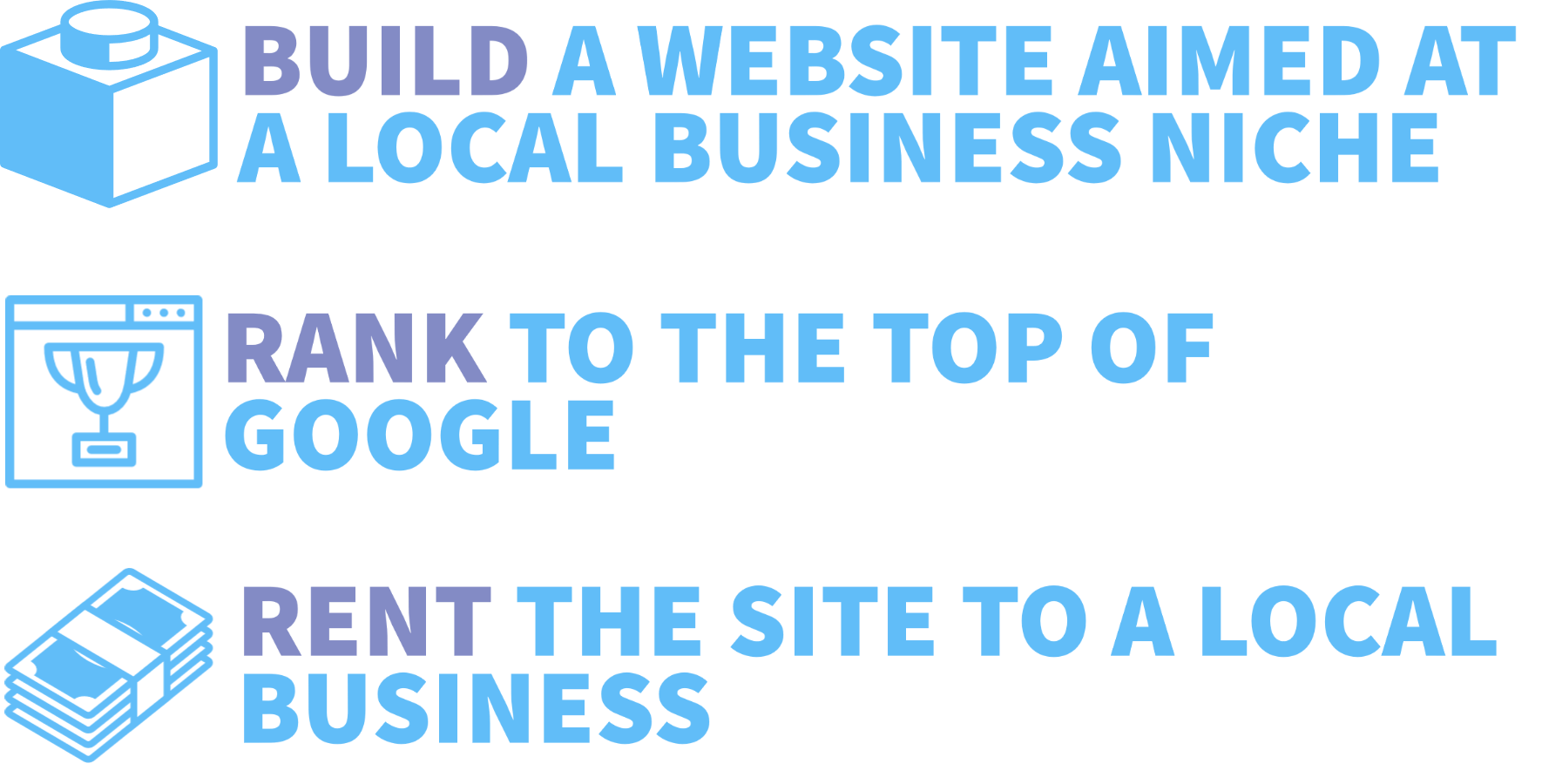



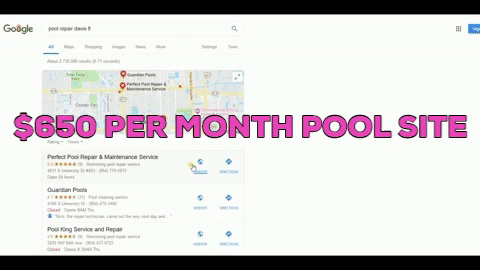



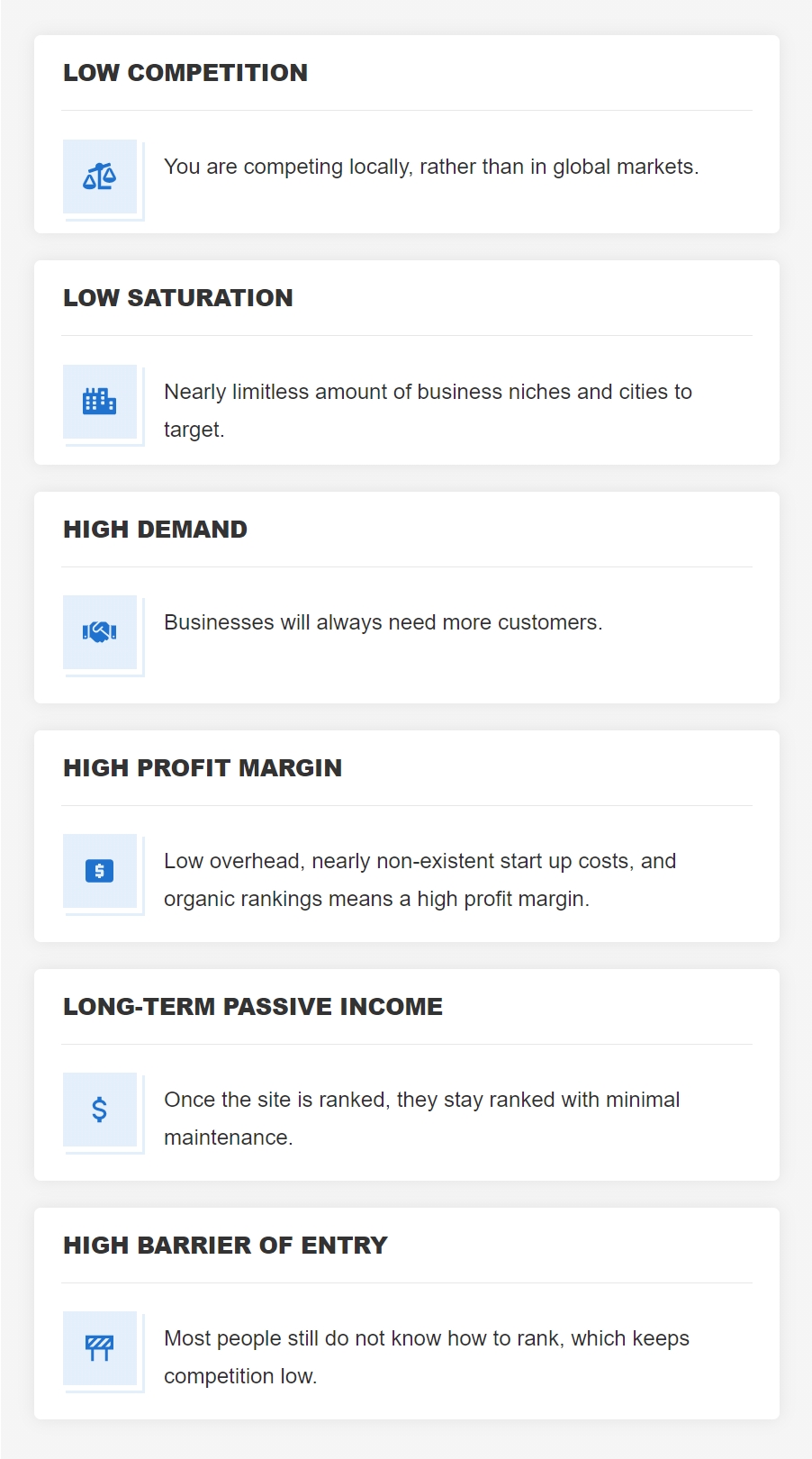



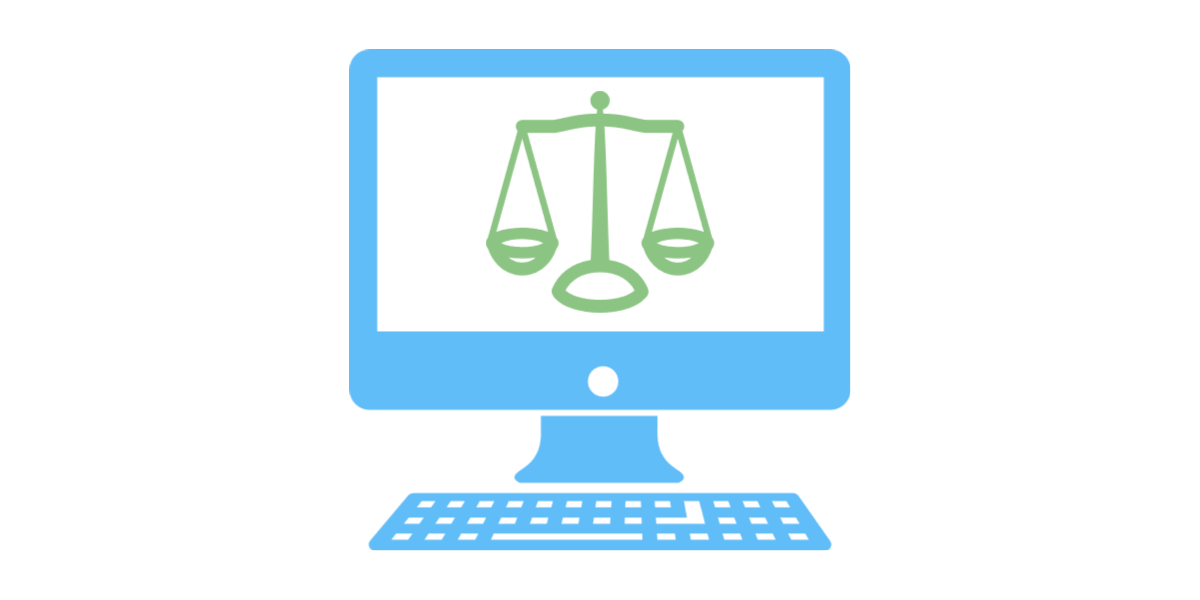

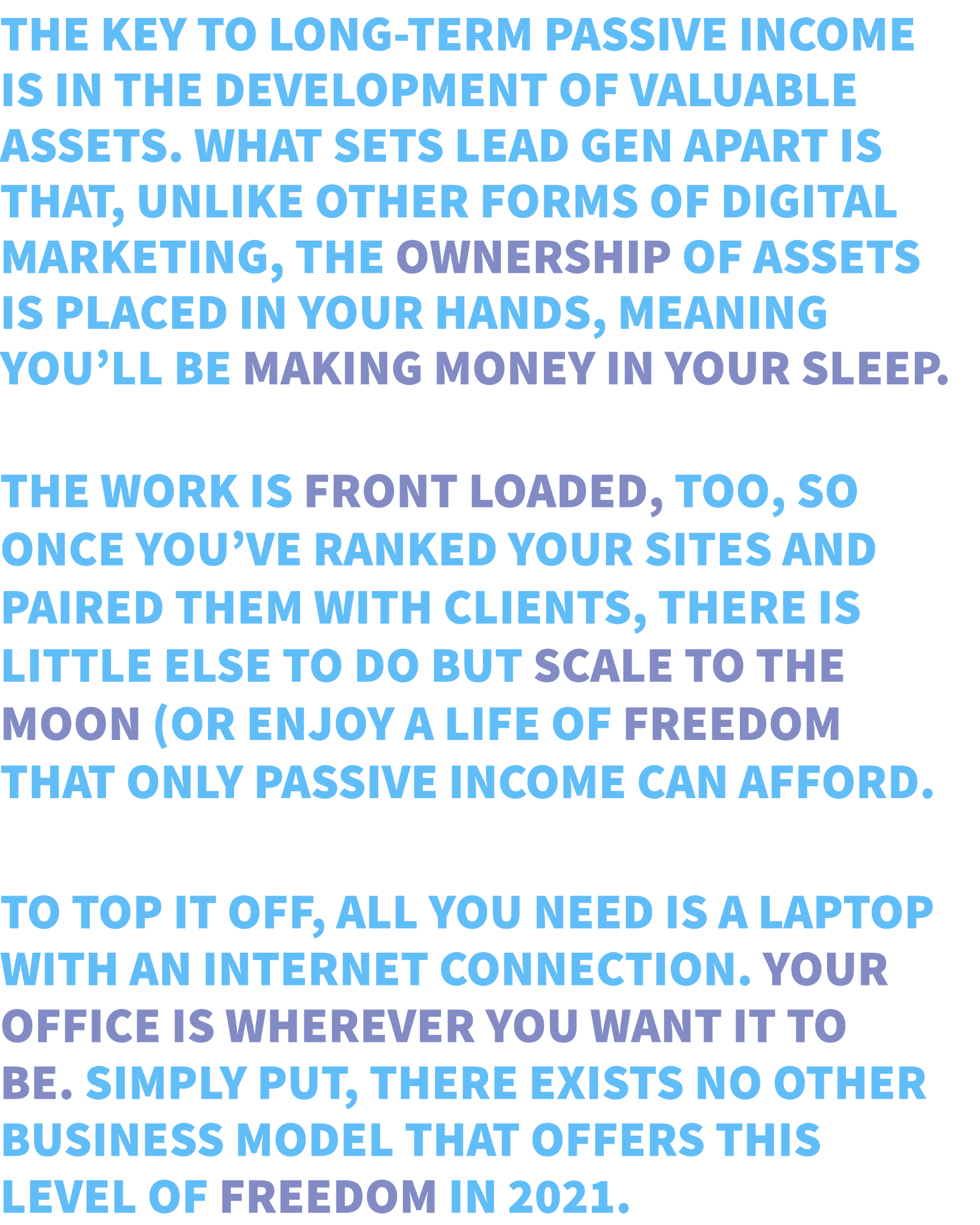

Local Lead Generation
Schedule your coaching call today